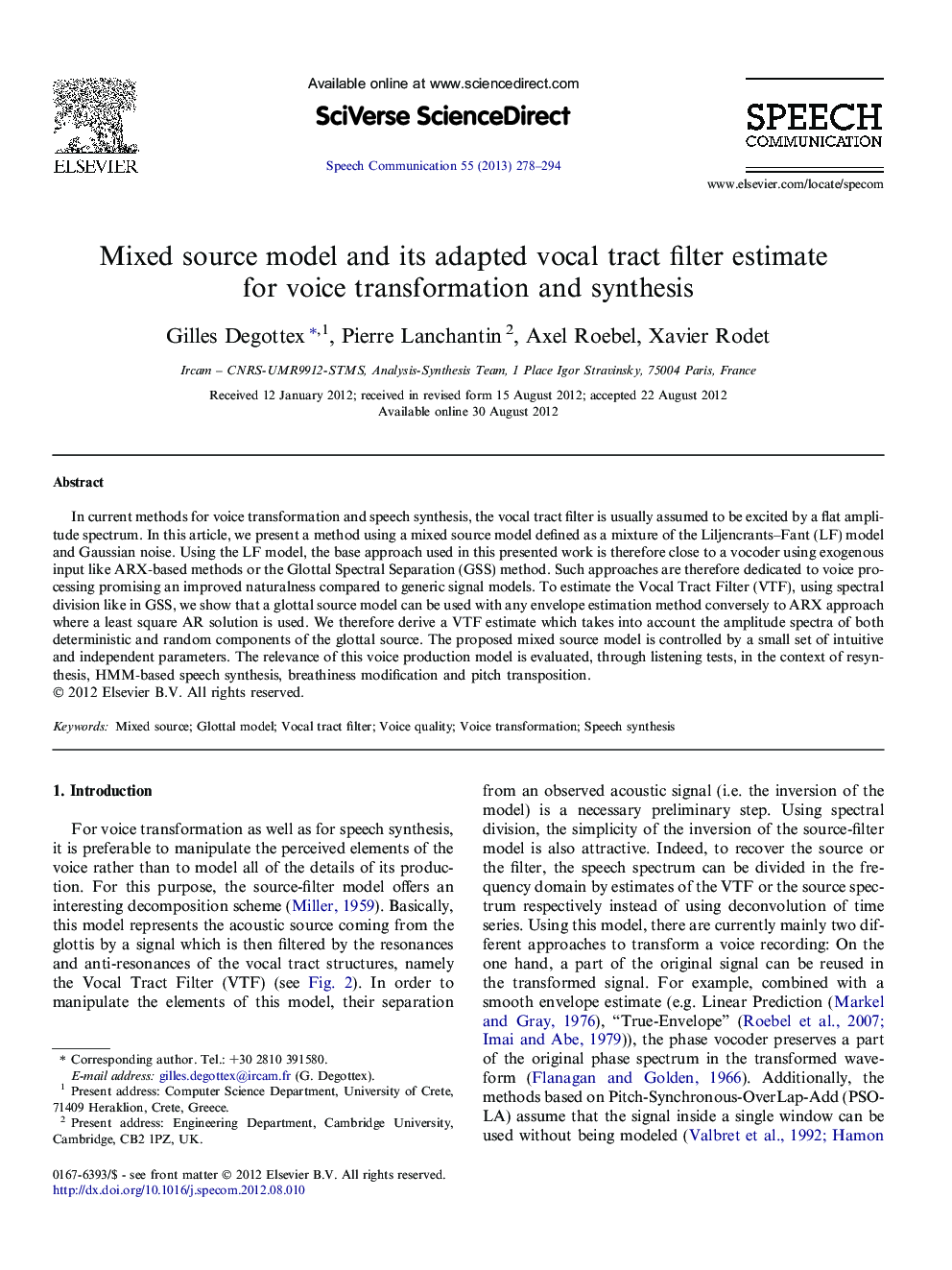| Article ID | Journal | Published Year | Pages | File Type |
|---|---|---|---|---|
| 567278 | Speech Communication | 2013 | 17 Pages |
In current methods for voice transformation and speech synthesis, the vocal tract filter is usually assumed to be excited by a flat amplitude spectrum. In this article, we present a method using a mixed source model defined as a mixture of the Liljencrants–Fant (LF) model and Gaussian noise. Using the LF model, the base approach used in this presented work is therefore close to a vocoder using exogenous input like ARX-based methods or the Glottal Spectral Separation (GSS) method. Such approaches are therefore dedicated to voice processing promising an improved naturalness compared to generic signal models. To estimate the Vocal Tract Filter (VTF), using spectral division like in GSS, we show that a glottal source model can be used with any envelope estimation method conversely to ARX approach where a least square AR solution is used. We therefore derive a VTF estimate which takes into account the amplitude spectra of both deterministic and random components of the glottal source. The proposed mixed source model is controlled by a small set of intuitive and independent parameters. The relevance of this voice production model is evaluated, through listening tests, in the context of resynthesis, HMM-based speech synthesis, breathiness modification and pitch transposition.
► Voice modeling using a mixed source, the Liljencrants–Fant model and noise. ► Vocal tract filter estimation adapted to the source model using spectral division. ► A mixed model of the source makes transients difficult to represent and manipulate. ► The breathiness of various voices can be modified. ► Downwards 1200 cents transpositions can be greatly improved.
